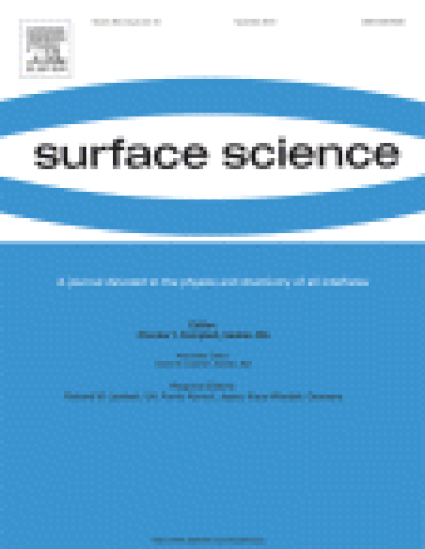
Article
Nanoscale Surface Patterning by Adsorbate-induced Faceting and Selective Growth: NaCl on Cu(211)
Surface Science
(2002)
Abstract
We present a combined high-resolution electron diffraction (SPALEED) and scanning tunneling microscopy study of the insulator/metal growth system NaCl/Cu(2 1 1) which is inherently unstable against lateral pattern formation on the nanometer scale. Cu(2 1 1) is a vicinal surface with (1 1 1) terraces and intrinsic (1 0 0) steps (step distance 6.25 Å). This starting surface restructures upon NaCl deposition when the growth temperature exceeds ∼270 K. The initially flat surface is transformed into a periodic one-dimensional hill-and-valley structure consisting of (3 1 1) and (1 1 1) facets. NaCl grows selectively on (3 1 1) facets only, thereby creating a regular surface pattern with alternating stripes of bare Cu and chemically inert NaCl-covered areas. The lateral stripe spacing can be varied from ∼30 Å at 300 K to ∼230 Å at 600 K via the growth/annealing temperature. The present restructuring process is governed by the interplay between energetics and kinetics, namely by (1) the tendency to form (1 0 0)-terminated NaCl layers, (2) energetically favored interfacial matching between NaCl(1 0 0) and Cu(3 1 1), and (3) sufficient mobility of the substrate surface to allow for Cu mass transport.
Keywords
- Low energy electron diffraction (LEED),
- Scanning tunneling microscopy,
- Faceting Surface structure,
- morphology,
- roughness,
- and topography,
- Copper,
- Alkali halides,
- Vicinal single crystal surfaces,
- Insulating films
Disciplines
Publication Date
January, 2002
Publisher Statement
Copyright © 2001 Elsevier Science B.V DOI:10.1016/S0039-6028(01)01630-2
Citation Information
Andreas Riemann, S. Fölsch, A. Helms, J. Repp, et al.. "Nanoscale Surface Patterning by Adsorbate-induced Faceting and Selective Growth: NaCl on Cu(211)" Surface Science Vol. 497 Iss. 1-3 (2002) Available at: http://works.bepress.com/andreas_riemann/11/
